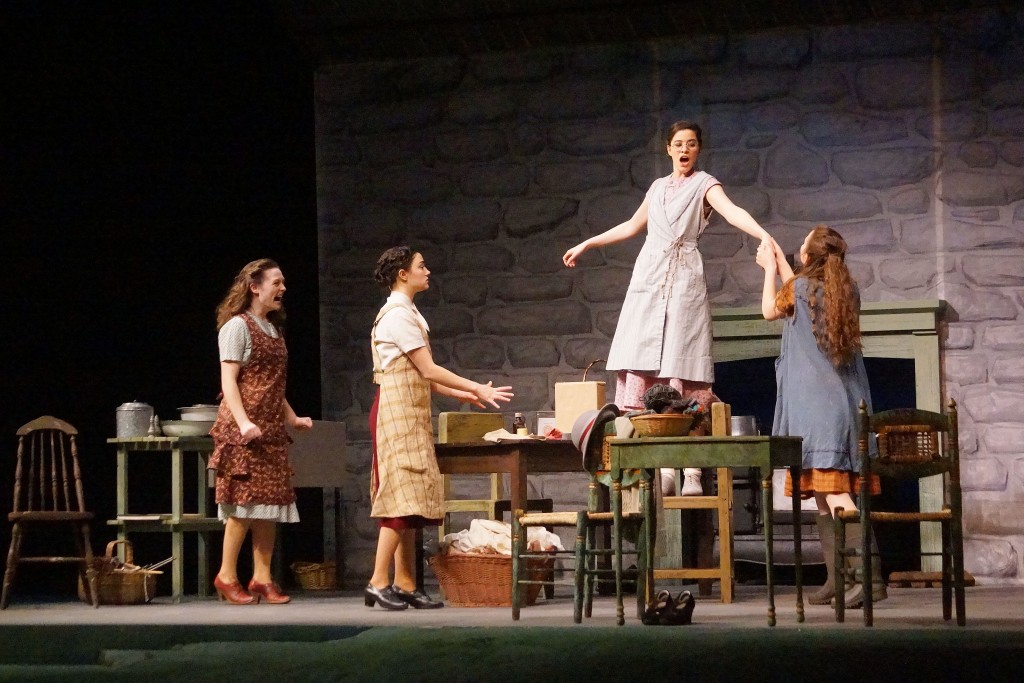
Starting this weekend, audiences in the Watters Theater will be transported to Ireland to follow the life of the Mundy family in “Dancing at Lughnasa.”
The play takes the audience to the remote and fictitious town of Ballybeg, Ireland in the 1930s — a name that is quite literally the anglicization of Gaelic for the words “little town.” The drama focuses on the Mundy sisters, who must address the rapid industrialization of the small town they live in while also facing familial crises such as the return of their ill brother, Jack, from his missionary work in Uganda. The drama is stormy and dark, though light breaks shine through in the narrative when music from a small, broken-down radio plays, transforming the scene into one filled with dancing and laughter.
Music is one of the most critical aspects of the play, as, when the radio interrupts the scene, the actors convey a newfound buoyancy, momentarily forgetting about any hardship or argument the family faces. The walls of the Mundy’s stone house are made of scrim — a material that appears opaque when in the dark but becomes transparent when light is shone on it — and the second the music begins, they reveal musicians who stand in a spotlight, emphasizing the brevity of the music that this singular radio brings the household. Then, when the radio inevitably breaks, the sisters are roughly jolted back to their reality, longing for the fleeting, uplifting moment that had just occurred.
Another crucial facet of “Dancing at Lughnasa” is that it is a memory play — meaning that each event is part of a character’s history and is seen through the lens of that character’s eyes. In this case, it is Michael’s perspective, referring back to when he was seven years old, right before the nearby harvest festival of Lughnasa. He claims that the memories of his family being together and of the happiness that accompanied the music are some of the best memories he has ever had, but also some of the saddest and strangest based on the arrival of his Uncle Jack, whom he had never met before.
As a product of this restricted viewpoint, there are aspects of the show that are shrouded in ambiguity. The audience has no way of knowing how accurately the characters are to their true selves, as we only see them as how Michael remembers them to be. Parts of the narrative appear to be fuzzy, as though he cannot fully recollect the events of the play. Even the scenery is blanketed in rolling fog, and the rapid-fire dialogue, which changes tone at seemingly random times, contributes to the lack of clarity in the play. Still, the actors do an excellent job of performing within the parameters of Michael’s memory. Though the script causes some of the transitions in mood to appear clunky, the cast still manages to make the moments appear effortless and true to character.
The show takes place during one of the last warm days of summer and is a reflection of the last untroubled days for the Mundy family. And while the days might be warm, the few joyous memories for the family are truly frozen in time, and available for anyone with a ticket to experience.
“Dancing at Lughnasa” will show in Watters Theater at 8 p.m. on March 4, 5, 11 and 12 and 2 p.m. on March 13.


